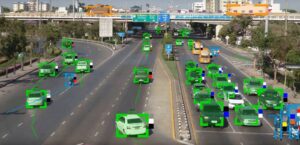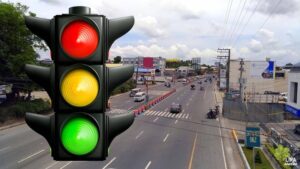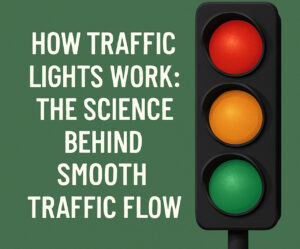The world of traffic signal systems is complex, and understanding the global standards that guide them is crucial for engineers, urban planners, and safety managers alike. Whether you’re configuring a traffic light controller, installing an emergency vehicle light controller, or managing a red light controller at a busy urban intersection, it’s important to know how systems vary across regions. These differences influence everything from equipment compatibility to safety compliance—and understanding them can save time, money, and even lives. Know more..
Understanding NEMA: The North American Standard
The National Electrical Manufacturers Association (NEMA) sets the dominant traffic control system standards in the U.S. and Canada. NEMA controllers are known for their modularity and long-standing use in North America.
A traffic light controller that complies with NEMA standards typically includes multiple plug-in modules. These allow for easier upgrades, replacements, and custom configurations depending on city needs. Because of its modular nature, troubleshooting and part replacement are streamlined.
NEMA’s approach is also beneficial in emergency response scenarios. Cities can integrate an emergency vehicle light controller that communicates directly with traffic lights to give priority to first responders. This allows ambulances and fire trucks to move through intersections faster and more safely.
The Rise of ATC: A Newer, Smarter Standard
Advanced Transportation Controller (ATC) standards are gradually overtaking traditional NEMA systems in some North American cities. Why? Because ATC focuses on interoperability, advanced processing, and real-time communication.
An ATC-based traffic light controller is designed to be open architecture. This enables smart city integration, predictive traffic modeling, and adaptive signal timing. It’s the next generation of control—less reliant on fixed programming, and more responsive to real-time traffic data.
A key upgrade in ATC systems is the seamless use of GPS-based emergency vehicle light controller inputs. The system can detect incoming emergency vehicles and adjust light cycles dynamically, which minimizes traffic disruption while maximizing safety.
When it comes to red light controller enforcement and analytics, ATC platforms offer enhanced data collection capabilities. This supports traffic flow analysis, violation recording, and even predictive maintenance, helping cities better manage their intersections.
European Systems: Rigorous, Centralized, and Eco-Focused
Across Europe, traffic control systems often prioritize centralized management and strict regulatory compliance. Unlike the more decentralized approach in the U.S., European nations like Germany, France, and the UK tend to follow national or EU-wide traffic control protocols.
European traffic light controller units are highly integrated and often managed via central urban traffic management centers. These systems use real-time sensor input and camera data to dynamically adjust signal timing and reduce congestion.
In terms of red light controller use, European systems are typically paired with heavy surveillance. Enforcement is stricter, and cameras are more widely accepted as a tool for regulation and compliance rather than punishment.
One standout feature in European systems is eco-friendly prioritization. Signals often adjust to support green wave traffic flow, especially during off-peak hours. Emergency systems integrate emergency vehicle light controller technology with public transport prioritization, making these systems more inclusive and adaptive.
Hardware Differences: From Enclosures to Interfaces
When comparing NEMA, ATC, and European standards, the traffic light controller hardware itself varies significantly:
- NEMA: Uses large, rugged enclosures. Components are plug-and-play.
- ATC: Features compact, modular units with powerful processors and Ethernet ports.
- European: Typically includes sleek, centralized cabinets with embedded software and real-time diagnostic tools.
The emergency vehicle light controller is more standardized in ATC and European systems. These platforms utilize advanced communication protocols, including 4G/5G, RF, or infrared, to preempt signals for emergency vehicle access.
Software Ecosystems and Integration
The software layer is perhaps the biggest differentiator. ATC and European systems lead in adaptive and AI-driven controls. They analyze patterns, respond to incidents, and self-correct timing in real time.
NEMA, while reliable, often lacks that dynamic edge. However, newer hybrid models are now being introduced with added intelligence to compete with ATC systems.
Red light controller applications, particularly in Europe, leverage software for license plate recognition and instant reporting to authorities. In North America, this tech is still catching up in terms of legal and privacy frameworks.
Maintenance and Scalability
Traffic light controller maintenance depends heavily on standard. NEMA is easier and cheaper to maintain due to its modularity. Parts are widely available, and technical expertise is abundant.
ATC, while more powerful, requires specialized training for updates and diagnostics. European systems often rely on centralized support, which can be more efficient—but also less flexible—especially for smaller municipalities.
For emergency vehicle light controller updates, all systems require regular firmware upgrades to stay compatible with changing communication technologies like GPS or cellular.
Costs and Procurement Considerations
NEMA systems are often the most cost-effective upfront, especially for small-to-mid-sized cities. Their long-standing presence in the market also means a robust network of vendors and support options.
ATC systems require a higher initial investment but often deliver ROI through data analytics and smart integration.
European-style traffic light controller and red light controller units can be the most expensive due to centralized software and regulatory requirements, but they deliver impressive performance in dense urban environments.
Legal and Regulatory Frameworks
In North America, cities must follow state-level standards but still have autonomy in choosing between NEMA and ATC. Procurement often depends on long-term infrastructure goals and budget cycles.
In Europe, procurement is more controlled and tied to urban development plans and regional transportation strategies.
The use of emergency vehicle light controller tech is legally supported across regions, though privacy concerns vary when data collection is involved—particularly for red light controller systems with camera enforcement.
The Push Toward Global Interoperability
Global collaboration is on the rise. As cities become smarter, there’s growing interest in creating interoperable systems. ATC’s open architecture is leading this movement. European cities, too, are adopting modular systems that can plug into global traffic analytics platforms.
This trend benefits manufacturers and municipalities alike. A globally compatible traffic light controller means cities can procure tech from a wider range of vendors and scale more easily.
Conclusion: Matching Standards with City Needs
There’s no one-size-fits-all solution when it comes to traffic control. Each standard—NEMA, ATC, and European—has its strengths. The best choice depends on city size, budget, integration needs, and safety priorities.
Whether you’re looking for a basic traffic light controller, a robust emergency vehicle light controller, or a high-tech red light controller, understanding these standards ensures you make informed, future-proof decisions. With cities evolving rapidly, adopting the right system now can set the foundation for smarter, safer transportation in the years to come.





